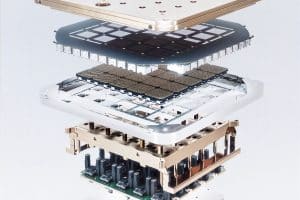- 🚗 Kia is offering incentives of $1,000 off an EV6 or $1,500 off an EV9 to Tesla owners, aiming to convert them to Kia’s EVs.
- 🌍 Incentive programs have been used by other brands like BMW and Lucid to attract Tesla drivers in the past.
- 💡 Kia’s strategy is notable because it builds on government rebates already available for EV buyers.
- 🤔 Elon Musk found Kia’s one-sided incentives humorous, noting Tesla doesn’t need to offer similar deals to attract Kia drivers.
- 📊 Tesla remains a more popular EV choice, selling significantly more vehicles in 2023 compared to Kia.
In the ever-evolving landscape of electric vehicles (EVs), automakers continuously vie for supremacy and customer loyalty. In a compelling strategic move, Kia has introduced a tantalizing incentive designed to draw Tesla owners away from their beloved vehicles. This development has sparked industry chatter, highlighted Elon Musk’s playful response, and warranted a closer look at the ongoing battle between EV giants.
A Closer Look at Kia’s Tempting Offer
Kia’s latest initiative aims to entice Tesla owners by offering substantial financial incentives for switching to their EV models. Specifically, Kia is providing:
- $1,000 off the purchase price of an EV6
- $1,500 off for those opting for the flagship EV9
These offers are exclusive to Tesla owners, a clear indication of Kia’s targeted approach in attracting an already discerning customer base.
The Competitive Landscape: Incentive Programs by Other Automotive Giants
While Kia’s offer is notable, it’s not unprecedented. The use of incentives to lure Tesla drivers is a well-trodden path. Here are some key examples:
- BMW’s Strategy: BMW has previously rolled out similar incentive programs, recognizing Tesla owners as prime candidates for brand conversion.
- Lucid’s Innovative Tactics: Lucid Motors took a more hands-on approach by setting up near Tesla Supercharger stations, offering test drives right at the heart of Tesla’s ecosystem.
Why Kia’s Strategy Stands Out
Kia’s initiative taps into existing governmental incentives aimed at promoting EV adoption. By layering their proprietary incentives on top of these rebates, Kia positions itself as a financially astute choice for prospective EV owners. This dual advantage makes their offer particularly alluring in a marketplace where initial costs can be a barrier for many buyers.
Elon Musk’s Lighthearted Reaction
Tesla’s CEO, Elon Musk, known for his candid and often humorous social media presence, responded to Kia’s strategy with characteristic wit. Musk quipped that Tesla has no need to incentivize Kia drivers to switch to Tesla vehicles, showcasing his confidence in Tesla’s market strength and appeal. This response not only underscores Tesla’s dominant position in the market but also adds a layer of intrigue to the brand dynamics at play.
Tesla vs. Kia: A Market Overview
A cursory examination of the sales data reveals the scale of the challenge Kia faces in its ambitious campaign:
- 2023 Sales Figures: Tesla maintains a significant lead with 1.81 million vehicles sold, overshadowing Kia’s 155,000 EVs sold in the same period.
While Kia’s volumes are growing, they remain a fraction of Tesla’s output. However, it’s vital to consider that Kia has not been active in the EV arena for as long and offers fewer models. Yet, the quality and reception of Kia’s vehicles, as evidenced by reviews, are highly positive, indicating a promising trajectory.
Key Factors Influencing EV Purchases
- Brand Loyalty: Tesla’s established brand loyalty can be challenging to overcome for new entrants or competitors.
- Infrastructure and Technology: Tesla’s vast Supercharger network and over-the-air software updates offer significant advantages.
- Cost Considerations: Financial incentives like those offered by Kia could tip the scales for cost-conscious consumers.
- Range and Performance: Consumer priorities often focus on range and performance specifications, where Tesla traditionally excels.
Conclusion: The Road Ahead
Kia’s bold incentive strategy to attract Tesla owners is a fascinating development in the electric vehicle industry. Whether it will achieve its intended effects remains to be seen. However, it undoubtedly adds a new dimension to the competitive dynamics in the EV market.
As automakers continue to innovate and strategize, consumer benefits through improved offerings and competitive pricing are likely to increase. For prospective EV buyers, such incentives can be game-changers, offering opportunities to make economically sound choices without sacrificing quality or performance.





